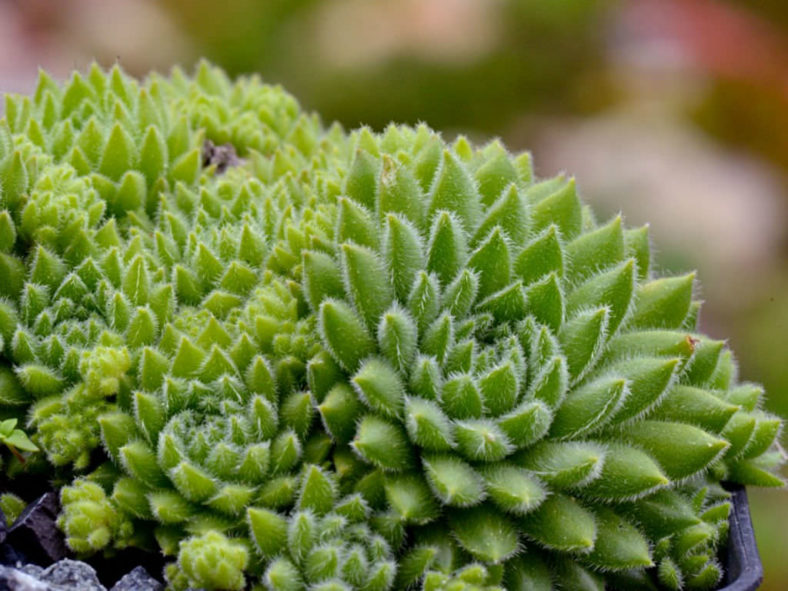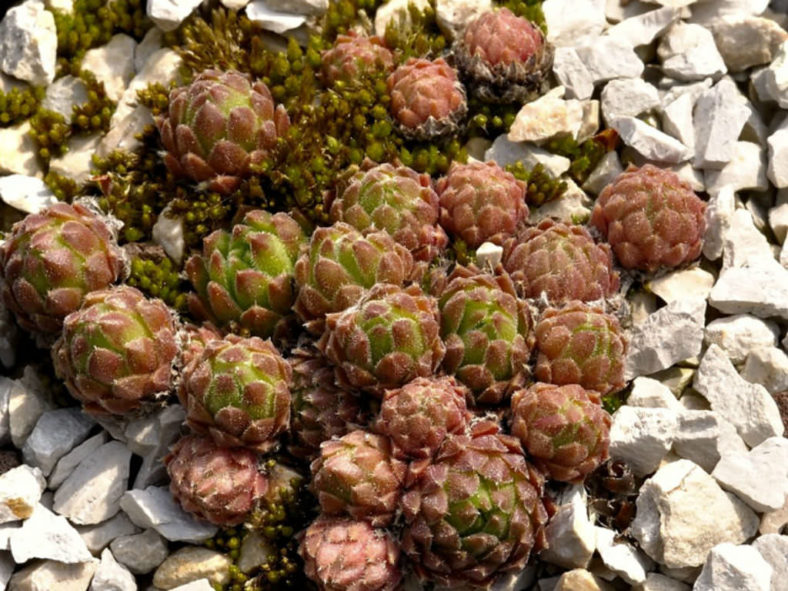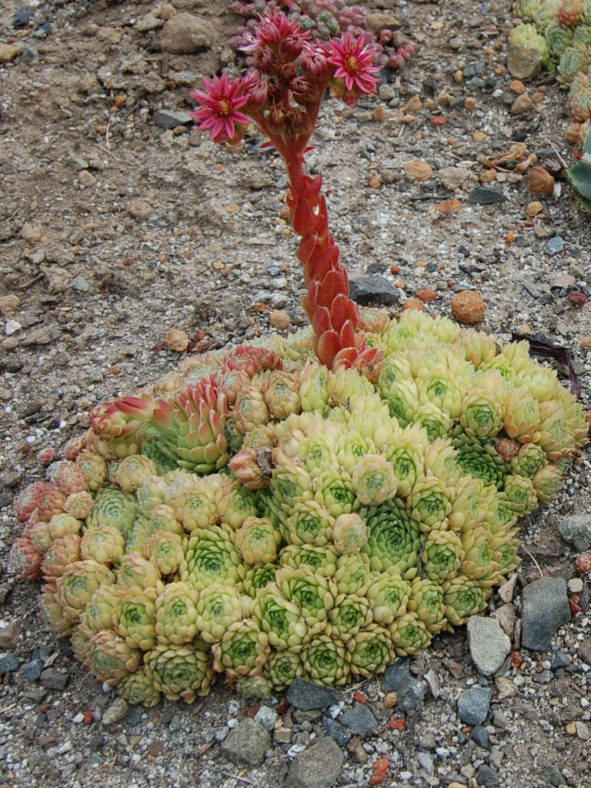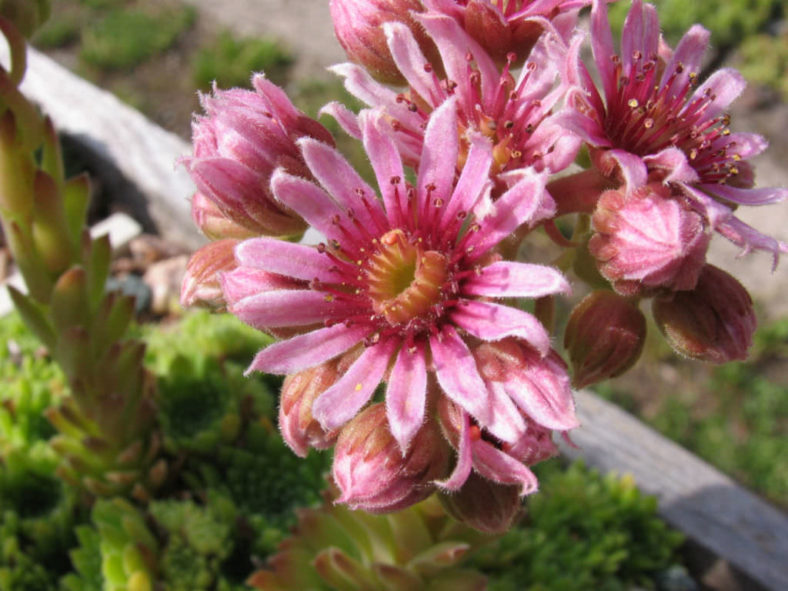Scientific Name
Sempervivum pumilum M.Bieb.
Common Name(s)
Houseleek
Synonym(s)
Sempervivum braunii, Sempervivum dominii, Sempervivum montanum
Scientific Classification
Family: Crassulaceae
Subfamily: Sedoideae
Tribe: Sedeae
Subtribe: Sedinae
Genus: Sempervivum
Origin
Sempervivum pumilum is native to the Northern Caucasus (Russia) and South Caucasus (Georgia/Ossetia). Russia and Georgia. It occurs in the alpine zone and the xerophytic scrub at elevations between 4,270 and 9,840 feet (1,300 and 3,000 m).
Description
Sempervivum pumilum is a small succulent that forms rosettes of hairy lance-shaped leaves. The rosettes grow up to 0.8 inches (2 cm) in diameter, producing numerous offsets on short, slender stolons. Leaves are greyish-green, often pinkish tinge in summer. Leaves are up to 0.4 inches (1 cm) long and 0.15 inches (0.4 cm) wide.
The flowers have rose-purple petals with pale margins and appear in clusters on stout, up to 4 inches (10 cm) tall stalks clothed with large imbricate leaves in summer.

Hardiness
USDA hardiness zone 5a to 10a: from −20 °F (−28.9 °C) to 35 °F (+1.7 °C).
How to Grow and Care
Sempervivums are not difficult to grow, provided they are not waterlogged and killed from excess watering. They can be easily grown outdoors and in containers, and they earned the name "Houseleeks" from their tendency to root on the roofs of houses. After the mother plant flowers, it will naturally die, but the plant has likely produced many offsets that will continue to grow by this time. These are excellent for cold windows. Sempervivum earned their popular name, "Hen and Chicks," from their growth habit. The mother plant, or hen, sends off numerous offsets, clustering around her base like chicks. These offsets can be easily repotted, or the plants can be left to form a clumping mat.
Repot as needed, preferably during the warm season. To repot a succulent, ensure the soil is dry before repotting, then gently remove the pot. Knock away the old soil from the roots, removing any rotted or dead roots. Treat any cuts with a fungicide. Place the plant in its new pot and backfill it with potting soil, spreading the roots out as you repot. Leave the plant dry for a week or so, then begin to water lightly to reduce the risk of root rot.
See more at How to Grow and Care for Sempervivum.
Links
- Back to genus Sempervivum
- Succupedia: Browse succulents by Scientific Name, Common Name, Genus, Family, USDA Hardiness Zone, Origin, or cacti by Genus
Photo Gallery
Click on a photo to see a larger version.



